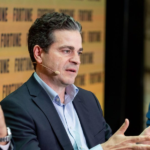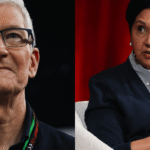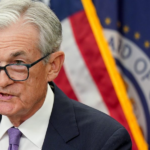Since the first weeks of President Donald Trump’s second term, when the president signaled a wholesale reimagining of the international trade system on a scale not seen in decades, mainstream economists have warned that prices would surge.
But halfway into the year and well into the most consequential reshuffling of trade in half a century, tariff-fueled inflation is missing in action.
Except there’s a mystery, wrapped in an enigma, and coated in a puzzle. One place tariffs aren’t showing up? In the inflation numbers.
Why doesn’t the data show a tariff hit? Here’s what leading economists told Fortune.
Though tariffs have been discussed for months, they haven’t actually been in place for that long.
That surge means that businesses could still be largely selling goods brought in under pre-tariff prices.
“Businesses stockpiled inventory, and presumably haven’t had to raise prices on goods because they’re sitting on the shelf. Eventually they will, and once they start to raise prices it’ll start impacting consumers,” said Eric Winograd, chief U.S. economist at AllianceBernstein, to explain this theory.
Uncertainty, in a word, is “the most important reason” the hard data doesn’t yet show tariff impact, according to Eugenio Aleman, chief economist at Raymond James.
“Business owners price their goods at replacement cost. If they have to buy the same good in the future, they have to increase the price [charged to the customer] if the price of the replacement is higher,” he told Fortune. The problem, though, is uncertainty. “Everybody knows the prices that firms will pay for replacement goods will be higher, but nobody knows by how much. That uncertainty is keeping many firms from repricing their goods.”
Businesses, particularly small businesses, could be choosing to eat the cost of tariffs for the time being. Unlike large businesses, they have a smaller client base and could be reluctant to hike prices, Aleman said.
An added factor is the bully pulpit of Truth Social, which Trump has wielded freely at even the largest retailer thinking of hiking costs.
Klingelhofer previously suggested that companies would take the brunt of the tariff impact because they’re the only ones who could afford to, with consumers being “tapped out” after years of high inflation. Former Federal Reserve economist Claudia Sahm also noted that companies today are less quick to hike prices now than they were during pandemic inflation, when Americans were flush with cash and eager to spend it.
In 2021 and 2022, “consumers up and down the income distribution, had some cash, and there were a lot of corporate earnings calls saying ‘We’re passing these [costs] through,’ and the consumer could kind of handle it,” she told Fortune.
“Foreign exporters have ended up absorbing a lot of [the costs], and businesses—very little has gotten to consumers at this point,” he said. Japanese carmakers, he noted, are slashing prices—sometimes nearly 20%—to compensate for the added costs U.S. buyers will pay. In other words, “Japan itself and Japanese companies are eating the costs of the tariffs.”
Every economist Fortune spoke with made some version of this point—that a tariff, rather than giving a blank check for a seller to boost prices, sets off a complicated negotiation between importers, exporters, and American end buyers. Finding the balance of which party pays how much will take time, and will be individual for each good and sector of the economy.
“Tariffs are a tax on imported goods,” Sahm said. “Nobody wants to pay the tax, so who is the weakest link? Walmart can go in and tell their Chinese producers, ‘You have to cut the price.’ Maybe in the pandemic the consumers said, ‘OK, I’ll pay it—I’m not really happy about it, but I have the money.”
The final answer, she added, “can be very specific to the business, the industry, and also the general macroeconomic conditions.”









